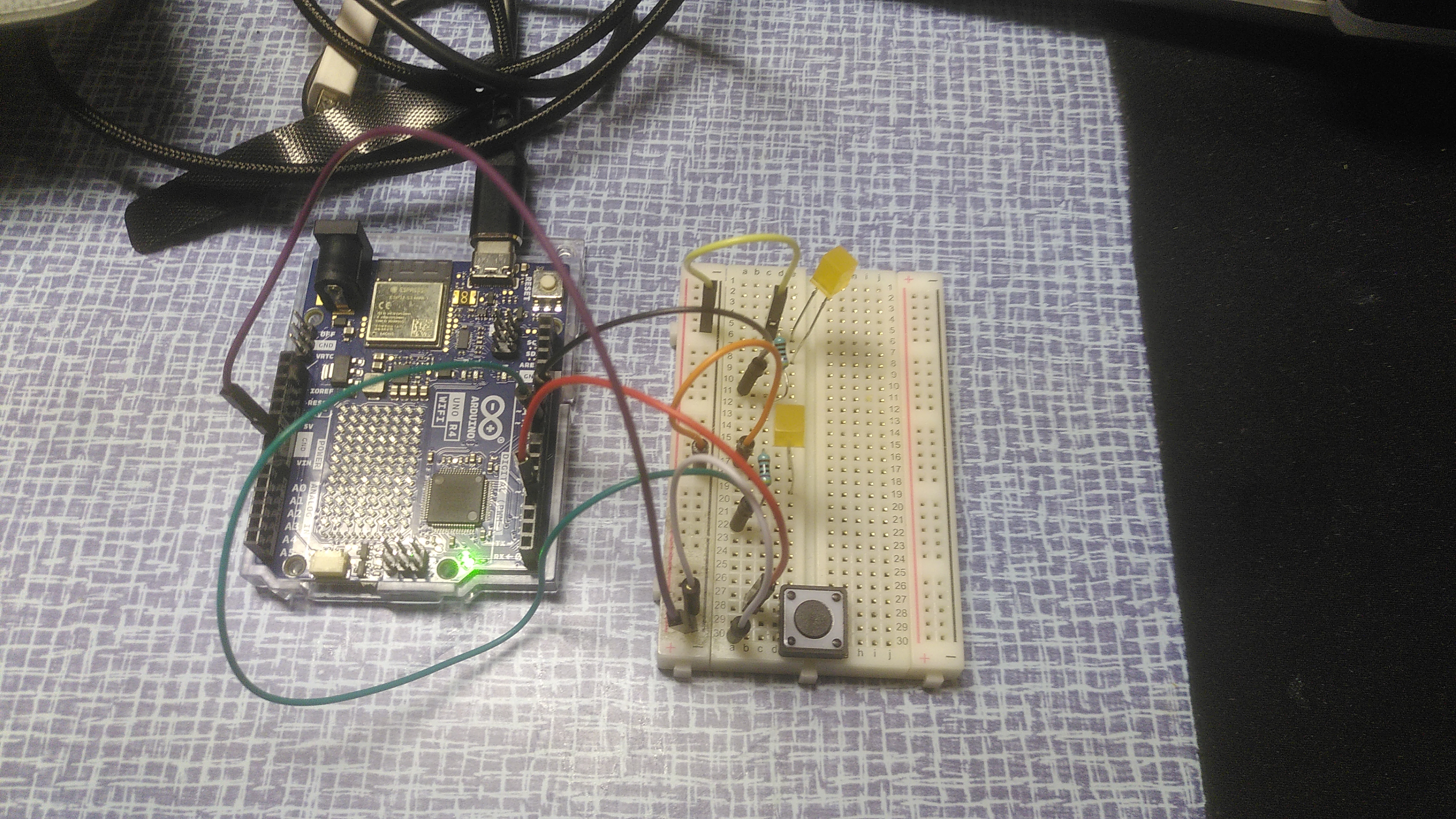The first actual homework task for this course was challenging for me in many ways. I figured out the initial logic pretty quickly, that I needed a so-called “state machine” to perform the functions described by Matti.
I drafted a rough digital outline (as instructed by Matti) of the functionality and logic in Blender game engine, since im most comfortable in that environment and Python.
Next, I started implementing the idea onto Arduino, which I started by checking out the Arduino documentation: https://docs.arduino.cc/built-in-examples/digital/StateChangeDetection/
This was pretty straightforward and I was soon able to make an alternating LED switch with the button. However, I struggled for a long time to figure out how to modify the code to achieve the states 0-1-2 and change between them - I believe this is due to the new kind of syntax Arduino IDE has I had to learn, and am still learning. I had to resort to checking the solution on the course page to push my code further, here it is:
#define LED_2_PIN 10
#define LED_3_PIN 9
#define BUTTON_PIN 4
#define LED_NUMBER 3
byte LEDPinArray[LED_NUMBER] = { LED_2_PIN,
LED_3_PIN };
unsigned long debounceDuration = 50; // millis
unsigned long lastTimeButtonStateChanged = 0;
byte lastButtonState = LOW;
int LEDIndex = 2;
void initAllLEDs()
{
for (int i = 0; i < LED_NUMBER; i++) {
pinMode(LEDPinArray[i], OUTPUT);
}
}
/*void powerOnSelectedLEDOnly(int index)
{
for (int i = 0; i < LED_NUMBER; i++) {
if (i == index) {
digitalWrite(LEDPinArray[i], HIGH);
}
if (i != index) {
digitalWrite(LEDPinArray[i], LOW);
}
}
}*/
void updateLEDs(int index)
{
if (index == 0) {
// Turn on the first LED only
digitalWrite(LEDPinArray[0], HIGH);
digitalWrite(LEDPinArray[1], LOW);
}
else if (index == 1) {
// Keep the first LED on and turn on the second LED
digitalWrite(LEDPinArray[0], HIGH);
digitalWrite(LEDPinArray[1], HIGH);
}
else if (index == 2) {
// Turn both LEDs off
digitalWrite(LEDPinArray[0], LOW);
digitalWrite(LEDPinArray[1], LOW);
}
}
void setup()
{
initAllLEDs();
pinMode(BUTTON_PIN, INPUT_PULLUP);
digitalWrite(LEDPinArray[LEDIndex], HIGH);
}
void loop()
{
unsigned long timeNow = millis();
if (timeNow - lastTimeButtonStateChanged > debounceDuration) {
byte buttonState = digitalRead(BUTTON_PIN);
if (buttonState != lastButtonState) {
lastTimeButtonStateChanged = timeNow;
lastButtonState = buttonState;
if (buttonState == HIGH) {
updateLEDs(LEDIndex); // button has been released here!
LEDIndex++;
if (LEDIndex >= LED_NUMBER) {
LEDIndex = 0;
}
//powerOnSelectedLEDOnly(LEDIndex);
}
}
}
}
And an image of my circuitry:
